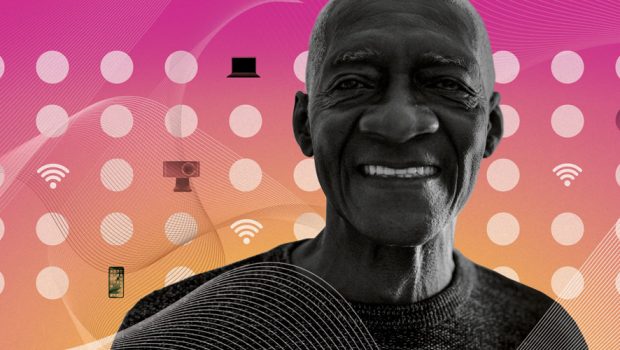Tips for Senior Care Organizations on Upgrading Their Network Infrastructure
It’s also important that senior care leadership and IT teams work with staff and residents to ensure the technology implementation is successful. Organizations should consider supporting stakeholders through help desks and concierge services. LeadingAge CAST provides a Resident/Client Technology Support and Training resources, including a white paper, interactive guide and case studies, to help senior care providers approach technical support and training for residents.
Doug McDonald, technology director in the office of the CTO at Extreme Networks, says organizations should have a sufficiently robust switching and routing infrastructure, with Wi-Fi on the edge, to provide needed services. He emphasizes the need for ubiquitous Wi-Fi, available throughout an organization’s campus, to connect residents and patients with desired services.
“If you don’t have the Wi-Fi technology, hardware and infrastructure to facilitate the needed bandwidth, then the applications overlaying it might not perform well and your organization may have bandwidth limitations that inhibit video quality,” he says.
In addition to meeting the high-availability requirements that staff and patient health and safety demand, says Norfleet, new networking solutions should centralize management, adopt zero-touch deployment models, provide service orchestration and automate security updates.
Which Network Technology Should Senior Care Organizations Choose?
Implementation of a facilitywide enterprise network creates connectivity and becomes the foundation to build upon for the resident, caregiver and guest experience, explains Norfleet. Every network implementation needs to incorporate security policies and procedures for a secure experience. She says that, in addition to network infrastructure upgrades, senior care organizations may also need to:
- Replace expensive legacy VHF radios with less expensive, hardened smart devices
- Replace legacy RFID staff duress and nurse call alarms with active Wi-Fi and Bluetooth Low Energy solutions integrated into a cloud-based location services platform
- Replace aging closed-circuit TV security camera networks with cloud-managed, high-definition smart cameras
- Leverage a cloud-based location services platform, such as Cisco DNA Spaces, during the replacement of failing or aging passive unit-based patient elopement controls with active solutions that integrate room occupancy information into unit or facility-based dashboards, to reduce staff stress and activities related to wandering
The advent of Wi-Fi 6E offers the potential for high bandwidth because it’s on a new spectrum that hasn’t been used before, says McDonald, noting that it could be very advantageous for providing care in senior living and post-acute organizations as more use cases arise.
OpenRoaming technology is another network upgrade option that promises to improve the senior care resident, care team and visitor experience.
“OpenRoaming enables residents, staff and visitors at senior care organizations to connect seamlessly and securely to the Wi-Fi network without needing to enter login credentials, making the network more accessible,” says Norfleet. “It ensures a connected experience from the parking lot, with a seamless transition onto the secure wireless network of the organization using public identity providers. No captive portal is required.”
Alwan recommends senior care organizations upgrade to a fiber backbone if possible to ensure adequate bandwidth not only for today, but for the next five or 10 years as bandwidth demand continues to rise. He also suggests having separate networks for residents, operations and possibly even visitors and partners, to protect the organization from cyberthreats.
The Importance of Partnerships in Senior Care Networking
The Infrastructure Investment and Jobs Act allots $65 billion in federal funding for broadband infrastructure. Of that funding, $42.5 billion is being allocated to a broadband infrastructure deployment program administered by the National Telecommunications and Information Administration, which will administer the funding through state grants. Alwan recommends that senior care organizations, especially larger organizations with locations in multiple counties, partner with their state to receive some of the grant funding.
IT partnerships are equally important. McDonald says administrators at senior living organizations should consider cloud-based technologies that are scalable and easy to manage across multiple locations. This involves shifting from a capital to an operational spending model.
“You don’t just buy infrastructure every six years and then refresh it because there’s another Wi-Fi solution or business demand. You’d need a big chunk of money to upgrade your system every six or seven years,” he says. “Now, with cloud-based capabilities, you pay for what you consume. You can also pay a subscription and get the most modern technology, which is a great model for senior living organizations.”
He compares the subscription model to getting an updated cable box from a cable provider, which can help senior care IT teams future proof their organization.
Hiring an in-house team with the expertise needed to design, implement and support an upgraded networking infrastructure would be expensive, and experts can be difficult to retain long-term.








Gloss